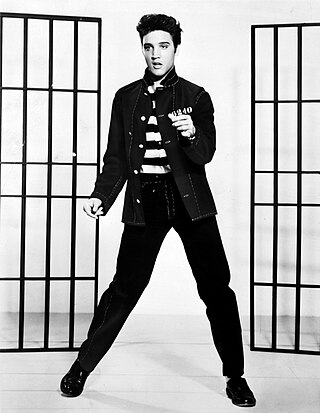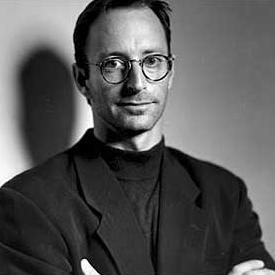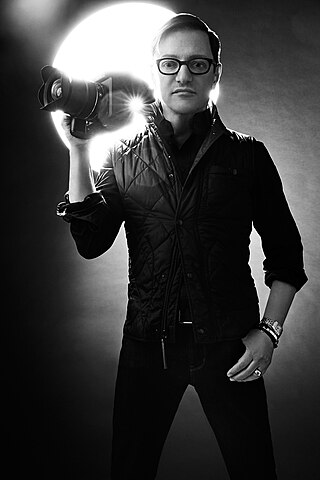
Elvis Aaron Presley, known mononymously as Elvis, was an American singer and actor. Known as the "King of Rock and Roll", he is regarded as one of the most significant cultural figures of the 20th century. Presley's energized performances and interpretations of songs, and sexually provocative dance moves, combined with a singularly potent mix of influences across color lines during a transformative era in race relations, brought both great success and initial controversy.

Marilyn Monroe was an American actress and model. Known for playing comic "blonde bombshell" characters, she became one of the most popular sex symbols of the 1950s and early 1960s, as well as an emblem of the era's sexual revolution. She was a top-billed actress for a decade, and her films grossed $200 million by the time of her death in 1962.

Herbert Ritts Jr. was an American fashion photographer and director known for his photographs of celebrities, models, and other cultural figures throughout the 1980s and 1990s. His work concentrated on black and white photography and portraits, often in the style of classical Greek sculpture, which emphasized the human shape.

Graham William Nash is an English-American musician, singer and songwriter. He is known for his light tenor voice and for his contributions as a member of the Hollies and Crosby, Stills & Nash.
William Eggleston is an American photographer. He is widely credited with increasing recognition of color photography as a legitimate artistic medium. Eggleston's books include William Eggleston's Guide (1976) and The Democratic Forest (1989).
George Edward Hurrell was a photographer who contributed to the image of glamour presented by Hollywood during the 1930s and 1940s.

Edward Joseph Ruscha IV is an American artist associated with the pop art movement. He has worked in the media of painting, printmaking, drawing, photography, and film. He is also noted for creating several artist's books. Ruscha lives and works in Culver City, California.

Terence Patrick O'Neill was a British photographer, known for documenting the fashions, styles, and celebrities of the 1960s. O'Neill's photographs capture his subjects candidly or in unconventional settings.

Arnold Abner Newman was an American photographer, noted for his "environmental portraits" of artists and politicians. He was also known for his carefully composed abstract still life images. In 2006, he was inducted into the International Photography Hall of Fame and Museum.

Matthew Russell Rolston is an American artist, photographer, director and creative director, known for his lighting techniques and detailed approach to art direction and design. Rolston has been identified throughout his career with the revival and modern expression of Hollywood glamour.
Robert "Bob" Emett Seidemann was an American graphic artist and photographer. He was known for his portraits of musicians and bands from San Francisco's counterculture in the 1960s and 1970s. Many of his images were published by Rolling Stone, by record labels, and in books.
Glen Wexler is an American photographer who is best known for his elaborately staged digital photocompositions of improbable situations.
The Getty Conservation Institute (GCI), located in Los Angeles, California, is a program of the J. Paul Getty Trust. It is headquartered at the Getty Center but also has facilities at the Getty Villa, and commenced operation in 1985. The GCI is a private international research institution dedicated to advancing conservation practice through the creation and delivery of knowledge. It "serves the conservation community through scientific research, education and training, model field projects, and the dissemination of the results of both its own work and the work of others in the field" and "adheres to the principles that guide the work of the Getty Trust: service, philanthropy, teaching, and access." GCI has activities in both art conservation and architectural conservation.
Norman Seeff is a South African photographer and filmmaker. Since moving to the United States in 1969, his work has been focused on the exploration of human creativity and the inner dynamics of the creative process.
Richard Crump Miller was an American photographer best known for his vintage carbro prints, photos of celebrities, and work documenting the Hollywood Freeway.

Bob Henriques (1930–2011) was an American photojournalist who was active in the 1950s and early 1960s. He was an Associate of Magnum Photos, and a free-lance photographer for Life Magazine. He is best known for his photos of movie stars, particularly Marilyn Monroe, the civil rights movement of the early 1960s, and the Cuban Revolution.
Anne Collier is an American visual artist working with appropriated photographic images. Describing Collier's work in Frieze art magazine, writer Brian Dillon said, "Collier uncouples the machinery of appropriation so that her found images seem weightless, holding their obvious meaning in abeyance."
Stirling Henry Nahum, or Sterling Henry Nahum, known professionally as Baron, was a society and court photographer in the United Kingdom.

Ed Feingersh (1925–1961) studied photography under Alexey Brodovitch at the New School of Social Research. He later worked as a photojournalist for the Pix Publishing agency. His talent for available light photography under seemingly impossible conditions was well recognised. His pictures of Marilyn Monroe are his best known, but he was a prolific photojournalist throughout the 1950s. Two of his moody photographs of jazz performers were selected by Edward Steichen for MoMA’s world-touring The Family of Man exhibition.
Anthony Hernandez is an American photographer who divides his time between Los Angeles, his birthplace, and Idaho. His photography has ranged from street photography to images of the built environment and other remains of civilization, particularly those discarded or abandoned elements that serve as evidence of human presence. He has spent most of his career photographing in Los Angeles and environs. "It is L.A.'s combination of beauty and brutality that has always intrigued Hernandez." La Biennale di Venezia said of Hernandez, "For the past three decades a prevalent question has troubled the photographer: how to picture the contemporary ruins of the city and the harsh impact of urban life on its less advantaged citizens?" His wife is the novelist Judith Freeman.










